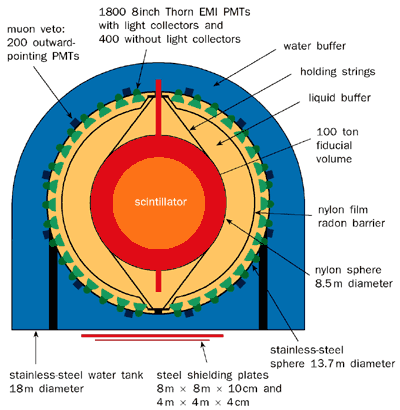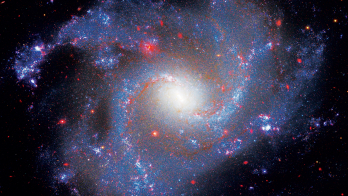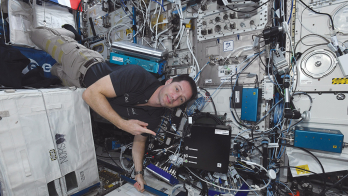A new ultra-sensitive experiment to detect solar neutrinos is being built underground in Italy. As construction at the Gran Sasso laboratory nears completion, Gianpaolo Bellini explains how the Borexino experiment will work, and what it might tell us about the nature of neutrinos.

The energy-dependent deficit of the measured solar neutrino flux compared to the predictions of the Standard Solar Model is often called the Solar Neutrino Problem. In recent years, this problem has become a paradox because the more recent experimental results (from Gallex and Sage), together with the older data (from Homestake and Kamiokande) and the measurement of the solar luminosity indicate a severe suppression of the solar neutrino flux from beryllium-7 reactions, pushing it lower than the neutrino flux from boron-8, which is a product of the reaction involving beryllium-7.
New neutrino physics, in the guise of oscillations, with neutrinos changing their “flavour” (electron-, muon-, or tau-) as they fly through space (September 1998), can fix these problems, which cannot be explained by changing the Standard Solar Model. In addition to this basic vacuum oscillation scenario, additional effects matter oscillations are possible due to charged current interactions between neutrinos and the electrons of matter, if the material (the Sun) traversed by the neutrinos is dense.
Measuring beryllium-7 neutrinos
One of the most crucial problems is the behaviour of the beryllium-7 solar neutrinos, whose energy range is below 1 MeV (two monochromatic lines at 384 and 862 keV; the second has by far the higher flux). In addition to measuring the total flux of beryllium-7 neutrinos, time variations of the flux should provide evidence of oscillations, independent of the Solar Standard Model.
Previous experiments (Homestake, Gallex, Sage) able to measure solar neutrinos at low energy were radiochemical experiments, with at most one event per day. A solar neutrino experiment detecting low-energy events in real time at high rate, was needed. Fulfilling the need is Borexino, located underground in the Laboratori Nazionali del Gran Sasso (LNGS) in Italy. The main neutrino reaction detected by Borexino is neutrinoelectron elastic scattering, and the main problem dictating the design is natural radioactivity.
Borexino is an unsegmented detector, based on a liquid scintillator, and conceived as a sequence of concentric shells; the more internal the shell, the higher its radio-purity. At least two metres of pure water provides the first shield against gammas and neutrons from the surrounding rock. The water, some 2300 m3 in total, is contained in a cylindrical stainless steel tank 18 m in diameter and 18 m high in the centre (shown blue in figure 1). An internal stainless sphere, 13.7 m in diameter, supports 2400 phototubes and divides the external water from an internal buffer liquid. 200 outward-pointing phototubes fixed on the external walls of the sphere provide a muon veto. 2200 phototubes are mounted on the internal walls, 1800 of them coupled to optical concentrators. The total optical coverage of the sensitive volume is about 30%.
The Pseudocumene buffer liquid (yellow in figure 1) assures another 2.6 m of shielding against rock emanation and against gammas produced by the phototubes, optical concentrators and related materials (mu-metal, sealing etc). Finally, the liquid scintillator is contained in a thin, transparent sheet of nylon, 8.5 m in diameter and 300 m3 in volume. The densities of the scintillator and the buffer liquid are practically the same to assure negligible buoyancy of the nylon vessel. Using an inner fiducial volume of 100 m3, 6 m in diameter (orange in figure 1) provides a further 1.25 m of shielding against emanation from the nylon walls and gammas from the liquid buffer. A further nylon balloon is installed between the stainless steel sphere and the inner vessel as a barrier against radon emanation from the various materials inserted in the sphere.






1 Comment